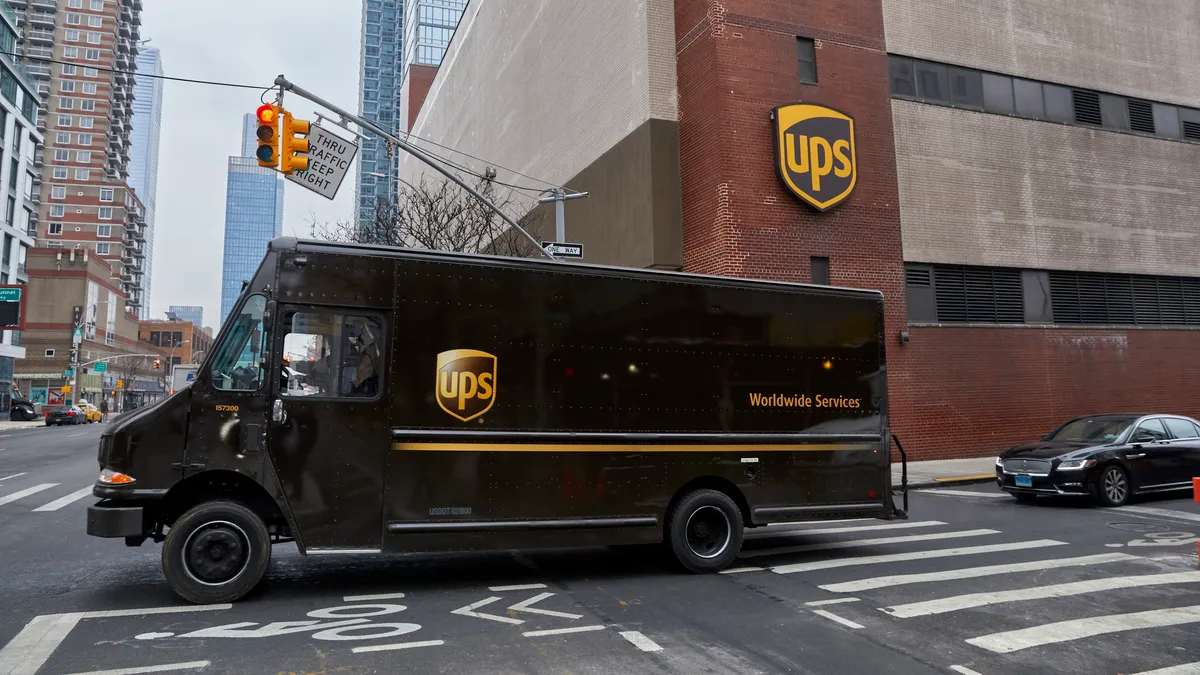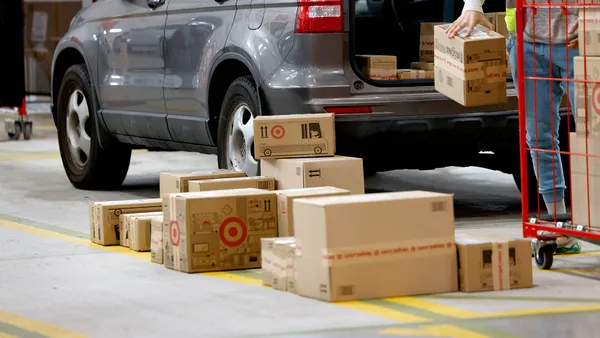Dive Brief:
- UPS plans to cut roughly 12,000 jobs this year to save $1 billion in costs as the delivery giant navigates a soft demand environment, executives said on the company's Q4 earnings call Tuesday.
- UPS currently employs about 495,000 people. The headcount reductions will primarily target management-level employees, of which UPS has 85,000, and contracted positions, CEO Carol Tomé said.
- CFO Brian Newman said 75% of the reductions will occur in the first half of the year. "It's a change in the way we work," he said. "So as volume returns to the system, we don't expect these jobs to come back. It's changing the effective way that we operate."
Dive Insight:
Delivery demand has plummeted since the heights of the COVID-19 pandemic, and the fourth quarter proved no different for UPS. The company’s revenue fell 7.8% year over year, while average daily volume in its U.S. segment declined by 7.4%, according to a news release.
It’s a reality that parcel carriers have been adjusting to for several quarters through layoffs and operational adjustments to minimize expenses.
UPS' current headcount is down by about 45,000 employees from 2021, and rival FedEx has also been cutting jobs. FedEx's U.S. headcount declined by about 29,000 in fiscal year 2023, President and CEO Raj Subramaniam said on a June earnings call.
The U.S. small package market isn't slated to bounce back in 2024 — UPS is expecting it to grow by less than 1% when excluding Amazon's outsized delivery activity, Tomé said. Minimal demand growth would keep the pricing environment in shippers' favor, with carriers offering discounts to attract more business into their networks.
To draw in more volume, Tomé said UPS will keep looking to appeal to shippers in the healthcare and the small- and medium-sized business segments. Additionally, the company is still pushing to recapture the volume it lost during contract negotiations with the International Brotherhood of Teamsters last summer.
"By the end of December, we had won back and pulled through nearly 60% of the volume diverted during our labor negotiations," Tomé said, up from 40% in October.














